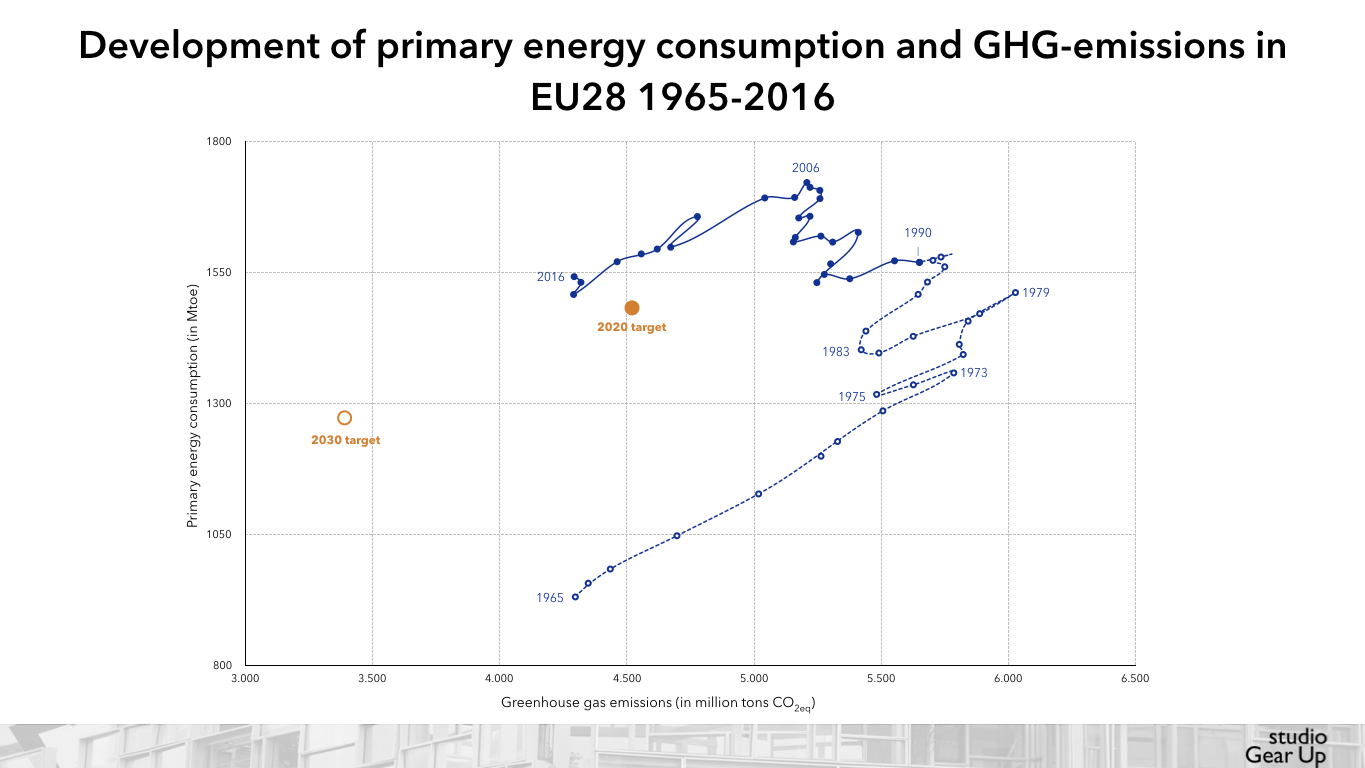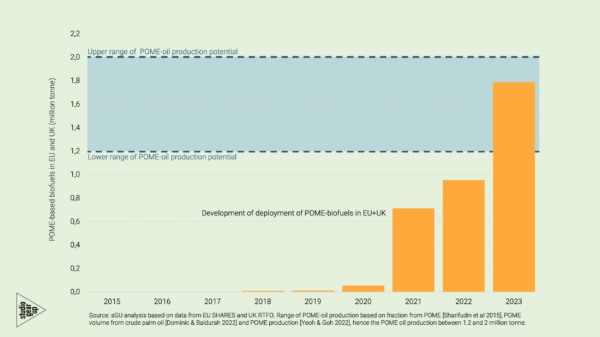Eurostat published early 2019 a press release that in 2017 energy consumption in the EU, again, has increased 1% compared to the year before. For three years in a row now energy consumption in EU28 is increasing. This makes it more difficult to achieve the energy efficiency improvement target. In 2020 energy consumption should be 20% lower than baseline projections, in 2030 32,5%. (see Eurostat-news).
Let’s have a look at history. How did the energy consumption of the 28 countries that now are part of the EU develop from 1965 onwards.
Combining data from BP’s Energy Review Statistics (dotted line in line below) and data from Eurostat visualises the development of primary energy consumption (y-axis) in EU28 and the corresponding greenhouse gas (GHG) emissions over more than half a century

Three trends are clearly visible:
- From 1965 onwards to 1979 energy consumption grew, as didGHG-emissions, with just a hick-up of the first oilcrisis
- After the 2nd oil crisis the old trend picked up at first but from 1990 onwards energy consumption and GHG emission seemed de-coupled, partly of the economic crisis in post-USSR countries that later joined the EU. While energy consumption kept growing, GHG emissions stabilized somewhat.
- EU energy consumption peaked in 2006. Due to the financial crisis that hit EU28, both energy consumption and GHG-emissions dropped
From 2014 energy consumption is on the rise again, reflecting the economic growth. And, as Eurostat recently announced, also in 2017 energy consumption rose further.
In the graph the EU targets for GHG emission reduction and the corresponding energy efficiency ambitions are presented for 2020 and 2030. EU is achieving its 2020 GHG emission target, but moves away from the energy efficiency target. The diagram makes it clear that the EU needs to curb its energy emissions to really get into the direction of the 2030 targets.
For 2050 only for the GHG emission reduction targets numbers are given. emissions 90% below 1990-level would result in max 565 million tonnes CO2eq, far left outside of the diagram.
Would it be possible to reach 1965-levels of primary energy consumption? It seems that that more or less would be needed in the road to 2050. It would require massive innovations on resource and innovation efficiency. And it would also require a clear strategy on avoiding as much as possible unnecessary energy consumption.



